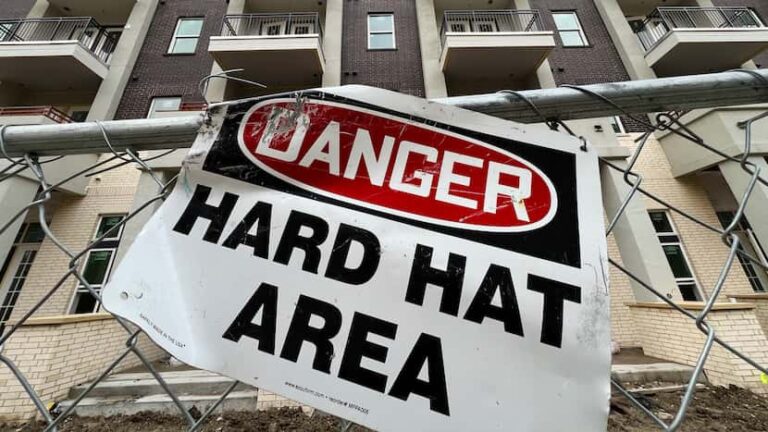The creaking of cranes and the screams of hardhatted workers have been heard more often in Dallas-Fort Worth than anywhere in the country in the past decade.
They are building apartments.
And even though people are flocking to the area at a breakneck pace, there are enough units to welcome them.
There is currently an oversupply of apartments in D-FW. Some units are vacant and rents are slightly lower than last year.
Supply is expected to peak within the next year. But experts say the oversupply is a short-term problem.
The machine has slowed down. Because of high costs, fewer apartments are built, and as the region grows, the apartments fill up. Investors, developers, and others who stand to profit are betting on the long term.
“Everyone is playing a waiting game, hoping that time will tell,” said Sriram Villupuram, a professor of finance and real estate at the University of Texas at Arlington.
The growth of the Dallas metropolitan area over the past decade has been tremendous.
More than 181,000 apartment units have been built since 2014, according to data from RealPage, a Richardson-based property management software company. This is a staggering 35.5% increase in a huge market.
Its buildings are not evenly spread across the area.
Apartment inventory has more than doubled in the Frisco, Rockwall/Rowlett/Wylie area, Allen/McKinney area, and southeastern Kaufman County markets over the past decade.
But North Irving, Mesquite, Far East Dallas and Far North Dallas added very few new units over the same period, according to the data.
Although prices have fallen over the past year, rents are still well above pre-pandemic levels.
As of April 30, the average rent for an apartment in Washington D-FW was $1,468, down 4% from a year ago, according to a report from MRI Apartment Data, which tracks apartment trends in 12 large Sunbelt markets. .
The company reported that the average rent in September 2018 was $1,116.
D-FW's April 2024 occupancy rate was 89%, with more than 38,000 units recently opened.
About 35,000 more apartments are under construction, and developers are proposing more than 80,000 additional units, according to MRI data.
Oversupply is a trend MRI is seeing not only in Dallas but also in other major Sun Belt cities such as Atlanta, Orlando, Houston, Austin, Nashville and San Antonio.
“The timing is bad at this point,” said Bruce McClenny, industry director at MRI Apartment Data. “The current apartment oversupply is just one chapter in the extreme supply and demand situation that began during the coronavirus pandemic.”
Approximately 26,000 units entered the D-FW market from March to June 2020, but very few were rented. However, in 2021, demand for apartments surged as the national economy reopened and the rise of telecommuting. Rent prices rose nearly 19% over the year, according to MRI data.
In response to that boom, developers built more apartments across the country than they had built in half a century. McClenny said the project took about two years from conception to completion, with the apartments beginning to be completed in 2023 and 2024.
Job growth in D-FW continues to be impressive, but not at the same level as in 2021. A slowdown in demand and a surge in supply led to lower annual rents, he said.
Mr McClenney said the 4 per cent drop in rents was “pretty dramatic”.
He said if occupancy rates trickle up, the complex could offer additional perks such as two months of free rent.
“It's starting to have an impact in some of these markets…particularly the high-end markets and the urban markets,” he said. “It could happen.”
However, Villupuram said he was surprised that rents were not cheaper with such occupancy rates. The decline may not have occurred because construction costs were high and lenders are not knocking on the door to collect debts.
“Ten percent is fine in a podunk market, but in the 10 years I've lived in Dallas-Fort Worth, 10 percent is unheard of,” he says.
The oversupply problem will continue as more projects are completed. Rents may come down a bit more, but construction will be delayed.
Rising construction loan interest rates and construction delays are contributing to the economic slowdown. Oversupply is also a slight factor.
D-FW's annual supply is expected to peak at about 38,000 units at the end of the year. Construction delays could delay peak production by one to two quarters. Carl Whittaker, chief economist at RealPage, said he expects the high point to come between late 2024 and summer 2025.
If developers build fewer units, new supply will decline, already slowing construction. According to RealPage data, the developer launched 24,000 units in his year to February 2024, less than half of the year-ago figure.
McClenny said a reversal is coming, with demand beginning to outstrip supply by late 2025 or early 2026.
“This is too expensive. Economic conditions have changed. Materials, costs, everything has changed,” he said. “All the costs of running a property have changed dramatically, making development almost impossible.”
But he said Dallas can handle the oversupply while this waiting game continues.
“Dallas is well placed to manage this,” he said. “This is a job creation engine like no other. It's just bad timing.”

